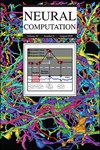An Overview of the Free Energy Principle and Related Research
IF 2.7
4区 计算机科学
Q3 COMPUTER SCIENCE, ARTIFICIAL INTELLIGENCE
引用次数: 0
Abstract
The free energy principle and its corollary, the active inference framework, serve as theoretical foundations in the domain of neuroscience, explaining the genesis of intelligent behavior. This principle states that the processes of perception, learning, and decision making—within an agent—are all driven by the objective of “minimizing free energy,” evincing the following behaviors: learning and employing a generative model of the environment to interpret observations, thereby achieving perception, and selecting actions to maintain a stable preferred state and minimize the uncertainty about the environment, thereby achieving decision making. This fundamental principle can be used to explain how the brain processes perceptual information, learns about the environment, and selects actions. Two pivotal tenets are that the agent employs a generative model for perception and planning and that interaction with the world (and other agents) enhances the performance of the generative model and augments perception. With the evolution of control theory and deep learning tools, agents based on the FEP have been instantiated in various ways across different domains, guiding the design of a multitude of generative models and decision-making algorithms. This letter first introduces the basic concepts of the FEP, followed by its historical development and connections with other theories of intelligence, and then delves into the specific application of the FEP to perception and decision making, encompassing both low-dimensional simple situations and high-dimensional complex situations. It compares the FEP with model-based reinforcement learning to show that the FEP provides a better objective function. We illustrate this using numerical studies of Dreamer3 by adding expected information gain into the standard objective function. In a complementary fashion, existing reinforcement learning, and deep learning algorithms can also help implement the FEP-based agents. Finally, we discuss the various capabilities that agents need to possess in complex environments and state that the FEP can aid agents in acquiring these capabilities.自由能原理及相关研究概述。
自由能原理及其推论,即主动推理框架,是神经科学领域的理论基础,解释了智能行为的起源。该原理指出,一个行为主体的感知、学习和决策过程都是由 "自由能最小化 "这一目标驱动的,并表现出以下行为:学习并运用环境生成模型来解释观察结果,从而实现感知;选择行动以维持稳定的首选状态,并将环境的不确定性最小化,从而实现决策。这一基本原理可以用来解释大脑是如何处理感知信息、学习环境知识和选择行动的。两个关键原则是,代理采用生成模型进行感知和规划,而与世界(和其他代理)的互动可提高生成模型的性能并增强感知。随着控制理论和深度学习工具的发展,基于 FEP 的代理已在不同领域以各种方式得到实例化,并指导了大量生成模型和决策算法的设计。这封信首先介绍了 FEP 的基本概念,然后介绍了它的历史发展及其与其他智能理论的联系,最后深入探讨了 FEP 在感知和决策方面的具体应用,包括低维简单情况和高维复杂情况。它将 FEP 与基于模型的强化学习进行了比较,表明 FEP 提供了更好的目标函数。我们通过对 Dreamer3 的数值研究,在标准目标函数中加入了预期信息增益,从而说明了这一点。作为补充,现有的强化学习和深度学习算法也可以帮助实现基于 FEP 的代理。最后,我们讨论了代理在复杂环境中需要具备的各种能力,并指出 FEP 可以帮助代理获得这些能力。
本文章由计算机程序翻译,如有差异,请以英文原文为准。
求助全文
约1分钟内获得全文
求助全文
来源期刊

Neural Computation
工程技术-计算机:人工智能
CiteScore
6.30
自引率
3.40%
发文量
83
审稿时长
3.0 months
期刊介绍:
Neural Computation is uniquely positioned at the crossroads between neuroscience and TMCS and welcomes the submission of original papers from all areas of TMCS, including: Advanced experimental design; Analysis of chemical sensor data; Connectomic reconstructions; Analysis of multielectrode and optical recordings; Genetic data for cell identity; Analysis of behavioral data; Multiscale models; Analysis of molecular mechanisms; Neuroinformatics; Analysis of brain imaging data; Neuromorphic engineering; Principles of neural coding, computation, circuit dynamics, and plasticity; Theories of brain function.
 求助内容:
求助内容: 应助结果提醒方式:
应助结果提醒方式:


